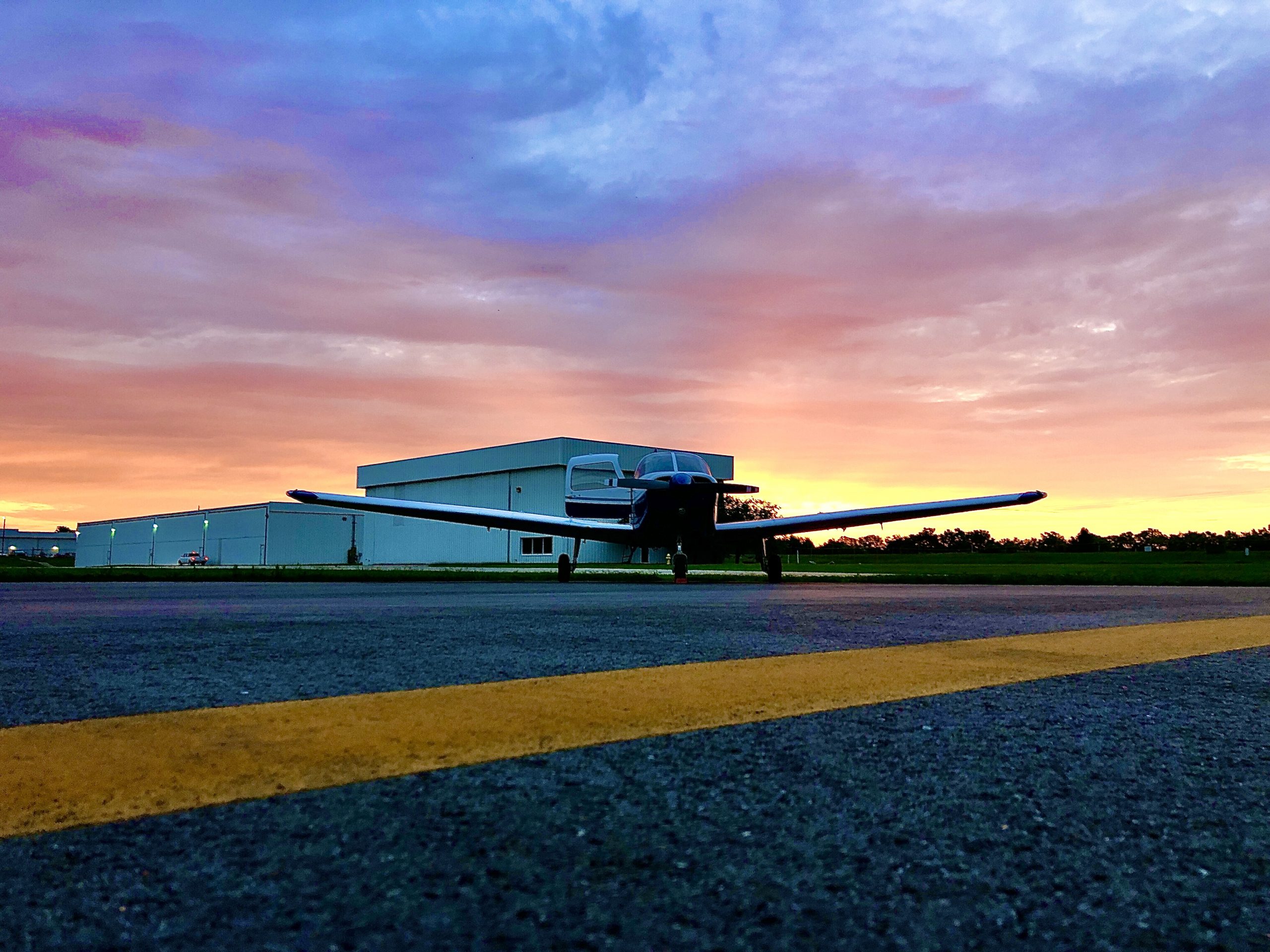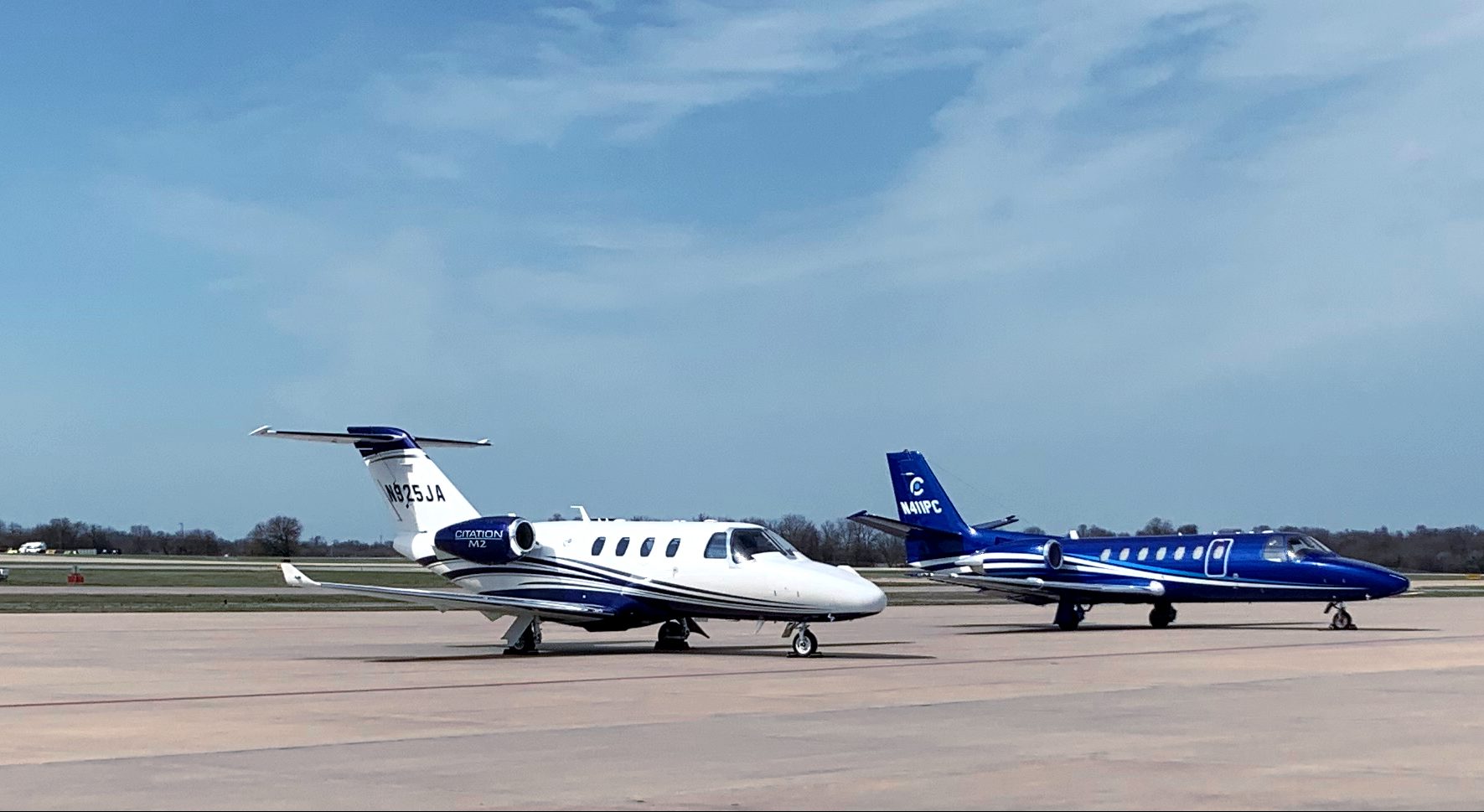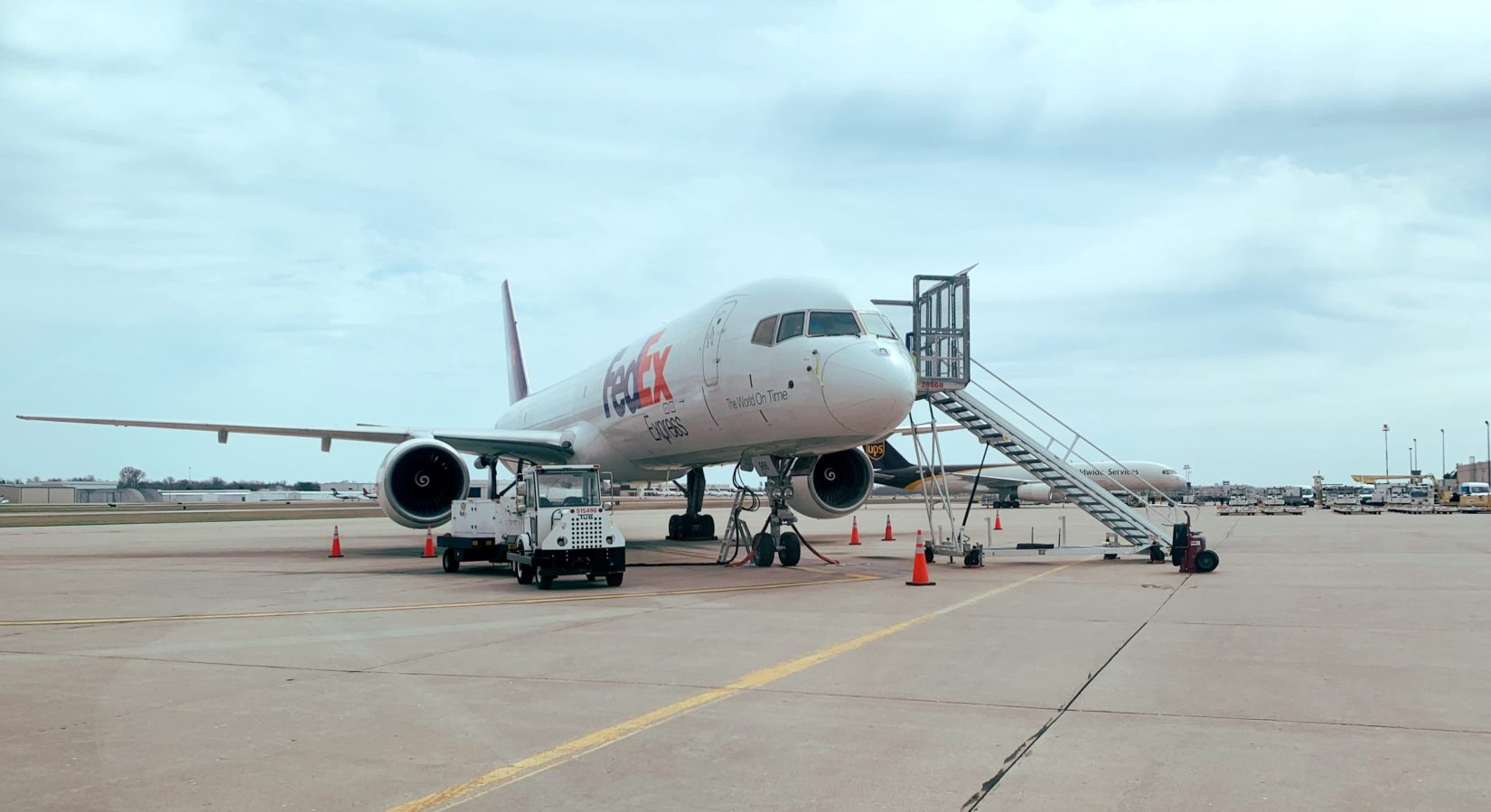Aviation enthusiasts in Springfield are excited about a new center for airplane mechanics planned for Ozarks Technical Community College, as the school will offer high-power job training — and its existence could increase the possibility of more flights in and out of town.
However, like many projects tied to the American Rescue Plan Act, some patience is required.
Mechanics-in-training won't likely be studying at the Springfield-Branson National Airport until 2024.
On Aug. 8, the Ozarks Technical Community College board of directors authorized a 7.5-percent architecture fee to N Form Architecture for the complete design of the school on airport grounds.
OTC Vice Chancellor for Administrative Services Rob Rector told the OTC board he hoped the plans would be done by the beginning of 2023.
“We’ll be back quickly,” Rector said. “When the floorplan is complete, we’ll just have final drawings and hopefully get this out to bid, and build this as quickly as we can.”
The project will then have to be put out to bid, which will require additional approval from the OTC board and from the Springfield Airport Board. The goal is to have the project done sometime in 2024.
In November 2021, the OTC board authorized payment of $85,000 for N Form Architecture to complete schematic designs for the airframe and powerplant maintenance facility at the airport. The building has an estimated cost of $12.5 million to build. The architectural fee estimate is $937,500, and the initial $85,000 from 2021 will be credited toward that cost.
On July 25, the Springfield City Council voted to award $750,000 in American Rescue Plan Act funds to OTC for the design and construction of a maintenance training school.
“Construction of this training facility would allow OTC to offer a Federal Aviation Administration-certified degree program to meet the existing employer needs and help attract additional maintenance hubs to our region,” Deputy City Manager Colin Quigley said.
A series of governmental authorizations in the summer of 2022 sets the table for OTC to develop the Center of Excellence for Airframe and Powerplant Maintenance Training.
The college received $5 million in American Rescue Plan Act funding allocated through the Missouri General Assembly, plus $3 million from the federal government through direct appropriations, which OTC Chancellor Hal Higdon credited to the work of U.S. Sen. Roy Blunt, R-Missouri.
“OTC has the distinction of getting the second-highest direct appropriation in the United States for a community college this year,” Higdon said.
OTC is also set to take in $750,000 in ARPA funding from the Greene County Commission marked specifically for the airplane mechanic program.
“The balance of the project will come from OTC funds,” Higdon said.
Why Springfield needs to train mechanics

Dec. 14, 2021, Envoy Air opened a new $11 million maintenance hangar at the Springfield-Branson National Airport. Envoy is a subsidiary of American Airlines.
Envoy conducted maintenance operations at SGF since the late ‘90s but outgrew its space. The company started a 20-year lease agreement with the Springfield airport when the new hangar opened, an agreement with two renewal options of five years each.
The 60,000-square foot hangar can hold three Embraer E175 passenger jets. After the planes undergo maintenance in Springfield, they fly to American Airlines hubs in Charlotte, North Carolina, Chicago and Dallas/Forth Worth.
The Envoy operation in Springfield employs about 75 people.
“With American Airlines’ recent decision to build the maintenance hub for their regional Envoy air carrier at the airport, there is a high demand for trained aviation mechanics,” Quigley said. “Currently, there is not a training provider in this region, which means local students do not have the opportunity to train for these high-wage jobs.”
An economic engine for SGF
Higdon spoke to the Springfield City Council in July about the plan to build an aviation mechanic school.
Higdon said the building will be about 30,000 square feet. The other number he brought into focus was the average yearly starting salary for mechanics who work on aircraft engines.
“The pay for these people who are coming out are in excess of $78,000 a year,” Higdon said. “This is to support the current work of American [Airlines], but this is also going to allow our airport, and chamber of commerce, and economic development [organizations] to maybe lure other airlines to come to town.”

In an early 2022 interview with the Daily Citizen, Springfield-Branson Airport Director of Aviation Brian Weiler explained that landing a deal with Envoy for 20 years was a major win for the airport, but it also created a need to invest in the airport and to invest in people.
“Part of it was a strong concern from American,” Weiler said. “‘Hey, if we invest in this and we do this project, are we going to have workforce to support it?’ And that’s why OTC is stepping up and working with us, and what they’re doing on the Center for Advanced Manufacturing for other manufacturers is exactly tied in with what we’re working with them on this new airframe and powerplant mechanic school.”
In previous discussions of the proposal to train mechanics on airport grounds, Weiler drew the analogy of Walgreens and CVS pharmacies. If American and Envoy can have long-term success using Springfield as a maintenance base, other airlines will take notice and want to use the same location.
On the whole, that could mean more planes coming into Springfield, and then flying away to new destinations.
“It’ll also probably mean better flights in Springfield, because the more planes that come in here for service overnight, the better flights we get,” Higdon said. “So it’s a win-win situation.”
Between the customs office, the flight school and the hangar space, all of the building where OTC and Premier Flight are set up is leased, and that generates revenue for the airport. Leases in general are a key driver for the Springfield-Branson National Airport to stand up financially. The airport is not supplemented with sales tax funds and must generate all of its own operating costs.
“We try to generate as much non-aeronautical revenue as possible, and so I’ve got some 40 tenants on the airport,” Weiler said. “A lot of cases, we’re like an industrial park next to a runway, and I’m like a quasi-city manager. It’s why I love this industry,”
OTC already has an interest in aviation and a lease on airport property. Higdon said the college’s pilot training program is “packed.”
OTC’s pilot training program

In June, the Springfield Airport Board voted to approve a new five-year lease agreement for building space with OTC. The college leases office space for $5.37 per square foot to operate its flight school. The five-year lease began July 1, and has two options for one-year renewals attached to the contract.
Students in OTC’s aviation technology program study airline operations, air traffic control systems, aviation weather and other useful “ground courses” for people who want to work at airports. In 2017, OTC entered an agreement with third-party partner Premier Flight Center for aviation labs.
When they graduate, students have an associate of applied science in aviation flight technology, plus a private pilot license, commercial pilot license and instrument ratings.
“The efforts to start a flight school really go back to 2015,” Weiler said. “We set about the idea that we are too large of a metropolitan area to not have a flight school.”
If you wait around for someone else to do it, Weiler said, you’re likely going to be waiting for a long time, and so the officials from the airport rounded up some of Springfield’s key stakeholders in aviation, education and economics.
“There are so many benefits to having a flight school,” Weiler said. “We’ve all heard in the airline industry — the intense shortage now, but it’s not just at the airlines, it’s cargo operators, it’s charter operations, it's at corporate flight departments.”
OTC and Premier Flight Center opened a flight school with 20 students and three training aircraft in 2017. OTC reached a contract agreement with Premier Flight Center to provide third party pilot training, and OTC offers an associates degree program in concert with flight training. Today, there are more than 70 students training with Premier Flight Center through OTC.
“It’s a little bit confusing, but the hangar is leased by Premier Flight Center, and the flight school administration area itself is leased by OTC, and then they sublease it to Premier Flight Center,” Weiler said.
Knowing that the program would grow, officials from the airport, OTC and Premier Flight Center developed a site plan for the flight school’s portion of the airport that allowed for growth. The flight school shares a small amount of space with the Springfield-Branson National Airport’s International Customs office.
Upon graduation from OTC, students who wish to fly for a major airline that requires bachelor’s degrees of its pilots go on to study at Missouri State or Drury University.
Creating a flight path to a better life
The first students might not start training until 2024, but Higdon expects spots in school will be just as in-demand as the jobs in the aviation industry.
“Programs like this will fill up quickly; I think they’ll fill up with local people,” Higdon said. “The jobs are there. They’ll be hired quickly.”
Higdon said OTC doesn’t advertise much outside of Southwest Missouri, which creates the hope that people who grew up in Springfield will get training, and then go to work for airlines when they graduate.
“They’ll graduate and they’ll just go across the tarmac to the other side of the airport and go to work,” Higdon said.
The $78,000 starting salary for mechanics drew the attention of Councilman Craig Hosmer.
“One of the knocks we get in Springfield is that we have a lot of jobs that are low paying, but this program is going to train people to do jobs that are in demand, that pay well and have good benefits,” Hosmer said.
In the 2022 Momentum: State of the Workforce survey, employers in the Springfield metro area sounded off on the challenges of hiring people. Employers' dissatisfaction with finding qualified applicants reached an all-time high, with 90 percent of the survey respondents from Greene County reporting that they had difficulty hiring qualified applicants in 2021.
Training centers for unique careers with above-average wages have benefits on smaller levels, which Hosmer and Hidgon also pointed out at the City Council meeting in July.
“This is the type of economic development that I think we should be doing more of, because it gives people the opportunity to improve themselves[...] and get them in position where they can afford to take care of their family, they can afford to take care of their needs, and I think it’s what economic development should be all about,” Hosmer said.
“We call it 1-on-1 economic development,” Higdon said. “When you move a person from a minimum wage to a living wage of $20 or $30 an hour, that ripples throughout their family, their wife, their husband, their kids; they go to better schools, they go to better day care and that is economic development. That’s how you fix homelessness; that is how you fix poverty.”




